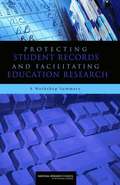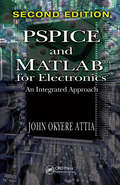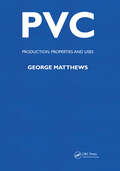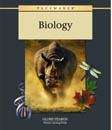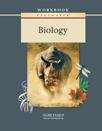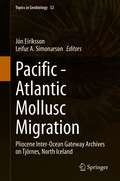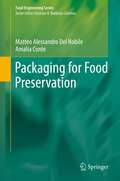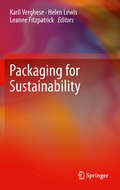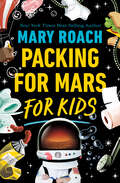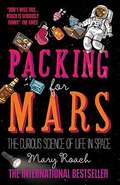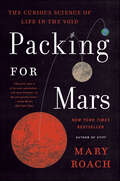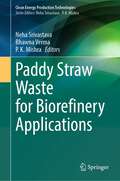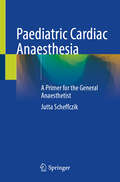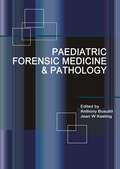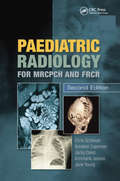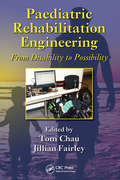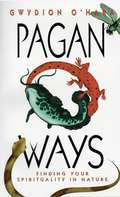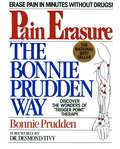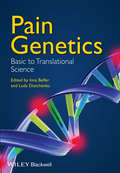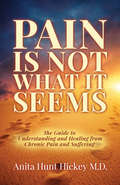- Table View
- List View
PROTECTING STUDENT RECORDS AND FACILITATING EDUCATION RESEARCH: A Workshop Summary
by National Research Council of the National AcademiesDesigned to protect the privacy of individual student test scores, grades, and other education records, the Family Educational Rights and Privacy Act (FERPA) of 1974 places limits the access of educational researches, and slows research not only in education but also in related fields, such as child welfare and health. Recent trends have converged to greatly increase the supply of data on student performance in public schools. Education policies now emphasize education standards and testing to measure progress toward those standards, as well as rigorous education research. At the same time, private firms and public agencies, including schools, have replaced most paper records with electronic data systems. Although these databases represent a rich source of longitudinal data, researchers' access to the individually identifiable data they contain is limited by the privacy protections of FERPA. To explore possibilities for data access and confidentiality in compliance with FERPA and with the Common Rule for the Protection of Human Subjects, the National Academies and the American Educational Research Association convened the Workshop on Protecting Student Records and Facilitating Education Research in April 2008.
PSPICE and MATLAB for Electronics: An Integrated Approach, Second Edition (VLSI Circuits)
by John Okyere AttiaUsed collectively, PSPICE and MATLAB are unsurpassed for circuit modeling and data analysis. PSPICE can perform DC, AC, transient, Fourier, temperature, and Monte Carlo analysis of electronic circuits with device models and subsystem subcircuits. MATLAB can then carry out calculations of device parameters, curve fitting, numerical integration, nume
PTSD and Mild Traumatic Brain Injury
by Jennifer VasterlingEvents that lead to traumatic brain injury are often also psychologically traumatic. Addressing a growing need among mental health practitioners, this authoritative book brings together experts in both posttraumatic stress disorder (PTSD) and mild traumatic brain injury (mTBI). Chapters present empirically based best practices for conceptualization, assessment, and intervention. The book also addresses the biological and psychosocial mechanisms by which PTSD and mTBI complicate each other; management of commonly associated conditions, including chronic pain and substance abuse; special considerations in military contexts; and possible ways to improve the structure and cost-effectiveness of providing care in this challenging area.
PVC: Production, Properties and Uses
by G. MathewsA study on the production, properties and uses, of PVC, Polyvinyl chloride which is the world's third-most widely produced synthetic plastic polymer by the Institute of Materials, London in 1996
Pacemaker Biology
by Globe FearonBiology is the study of living things and the principles that determine how living things function.
Pacemaker Biology: Classroom Resource Edition (3rd Edition)
by FearonContains a wealth of material that integrates and supports the study of the chapters and lessons in Pacemaker® Biology Student Edition as it aims in building the necessary science skills of the students
Pacemaker Biology: Workbook
by Pearson EducationThis comprehensive full-year program introduces students to the basic concepts and principles of biology and builds the fundamental science skills students of all ability levels need to succeed. Pacemaker Biology integrates technology, everyday applications, careers, and modern leaders into biology. Lexile Level 760 Reading Level 3-4 Interest Level 6-12
Pacemaker General Science (3rd edition)
by Globe FearonThis book teaches about three different areas of science: life science, physical science, and earth science. You will learn about living things, including plants and animals. You will study motion and forces, such as those that affect a thrown baseball and a roller coaster racing along on its track. You will come to better understand the features of the Earth, including its oceans and moon. When you finish this book, you will be prepared to continue studying any field of science you choose. You will be on the road to success in the 21st century.
Pacific - Atlantic Mollusc Migration: Pliocene Inter-Ocean Gateway Archives on Tjörnes, North Iceland (Topics in Geobiology #52)
by Leifur A. Símonarson Jón EiríkssonThis volume sheds new light on the marine fauna and geological setting of the Tjörnes Sequence, North Iceland, which is a classic site for the Pliocene and Pleistocene stratigraphy of the North Atlantic region. Readers will discover descriptions of new data collected by the editors over a period of over three decades on marine faunal assemblages and sedimentology available for palaeoenvironmental reconstructions, as well as the tectonic and stratigraphical relationships on Tjörnes Peninsula. The book includes a comprehensive account of all the collections of marine fossil invertebrate macrofossils and foraminifera known to the editors from the Tjörnes Sequence. It is expected to elucidate sedimentological and faunal changes from relatively stable Pliocene conditions to highly variable and periodically harsh climatic conditions of recurring Quaternary glaciations. The distribution, recent or fossil, of various species is recorded and pertinent ecological and biological features are also discussed. The Tjörnes Sequence records the Neogene migration of Pacific species into the North Atlantic. Researchers in geology, climate science, environmental science and earth science will find this book particularly valuable.
Packaging for Food Preservation
by Amalia Conte Matteo Alessandro Del NobileThe book will be focused on the three most important aspects of food packaging: Modeling, Materials and Packaging Strategies. The modeling section will provide a complete overview of mass transport phenomena in polymers intended for food packaging applications. The materials section will cover the most interesting problem-solving solutions in the field of food packaging, i.e., low environmental impact active films with antimicrobial activity. Lastly, the packaging section will provide an overview of the most recent approaches used to prolong the shelf life of several food products.
Packaging for Sustainability
by Helen Lewis Leanne Fitzpatrick Karli VergheseThe packaging industry is under pressure from regulators, customers and other stakeholders to improve packaging's sustainability by reducing its environmental and societal impacts. This is a considerable challenge because of the complex interactions between products and their packaging, and the many roles that packaging plays in the supply chain. Packaging for Sustainability is a concise and readable handbook for practitioners who are trying to implement sustainability strategies for packaging. Industry case studies are used throughout the book to illustrate possible applications and scenarios. Packaging for Sustainability draws on the expertise of researchers and industry practitioners to provide information on business benefits, environmental issues and priorities, environmental evaluation tools, design for environment, marketing strategies, and challenges for the future.
Packing for Mars for Kids
by Mary Roach“America’s funniest science writer” (Washington Post) asks the questions children ask in this young readers adaptation of her best-selling Packing for Mars. What is it like to float weightlessly in the air? What happens if you vomit in your helmet during a spacewalk? How do astronauts go to the bathroom? Is it true that they don’t shower? Can farts really be deadly in space? Best-selling Mary Roach has the answers. In this whip-smart, funny, and informative young readers adaptation of her best-selling Packing for Mars, Roach guides us through the irresistibly strange, frequently gross, and awe-inspiring realm of space travel and life without gravity. From flying on NASA’s Weightless Wonder to eating space food, Packing for Mars for Kids is chock-full of firs-hand experiences and thorough research. Roach has crafted an authoritative and accessible book that is perfectly pitched to inquiring middle grade readers.
Packing for Mars: The Curious Science of Life in Space
by Mary RoachWhat happens when you vomit during a space walk? The bestselling author of Stiff explores the irresistibly strange universe of space travel and life without gravitySpace is devoid of the stuff humans need to live: air, gravity, hot showers, fresh veg, privacy, beer. How much can a person give up? What happens when you can't walk for a year? Is sex any fun in zero gravity? What's it like being cooped up in a metal box with a few people for months at a time? As Mary Roach discovers, it's possible to explore space without ever leaving Earth. From the space shuttle training toilet to a 17,000 mile-per-hour crash test of NASA's space capsule (cadaver stepping in), she takes us on a surreally entertaining trip into the science of living in space.
Packing for Mars: The Curious Science of Life in the Void
by Mary Roach“America’s funniest science writer” (Washington Post) explores the irresistibly strange universe of life without gravity in this New York Times bestseller.The best-selling author of Stiff and Bonk explores the irresistibly strange universe of space travel and life without gravity. From the Space Shuttle training toilet to a crash test of NASA’s new space capsule, Mary Roach takes us on the surreally entertaining trip into the science of life in space and space on Earth.
Packs: Strength in Numbers
by Hannah Salyer★ "Part natural science, part deep ecology, wholly captivating."—Kirkus, STARRED review★ "A must-purchase for every collection." —School Library Journal, STARRED review An exquisitely illustrated celebration of animals who live in packs, herds, pods, and more—including humans. Vivid art and exuberant vocabulary are perfect for emerging readers and parents looking for nonfiction picture books for home learning. Packs shows how togetherness and teamwork are the keys to survival of any species, and the many ways we rely on one another."Showing how different animals benefit from living and working in groups, Salyer&’s debut is a great example of the inventiveness possible in a nonfiction picture book."—New York Times Book Review Groups, packs, herds of millions, and more—our world teems with animals on land, air, and sea.Packs is an inspiring celebration of how togetherness helps many creatures thrive, in both nonhuman and human communities. Hannah Salyer&’s stunning selection reminds us that teamwork is universal, there is brilliance in biodiversity, and there is strength in numbers. Includes an author&’s note encouraging community engagement and activism, as well as a fun visual index of the animals featured.
Paddy Straw Waste for Biorefinery Applications (Clean Energy Production Technologies)
by P. K. Mishra Neha Srivastava Bhawna VermaThis book provides an exclusive and critical in-depth analysis of paddy straw waste valorization at a broad scale for different industrial applications. It explores and discusses the various valorization pathways of paddy straw into valuable products connected to biorefineries' products and byproducts. The book also examines the scope, potential, and availability of paddy straw in the field of biorefineries. Various lignocellulosic biomasses with expanded potential are known for their industrial applications, even at a broad pilot range. Among these biomasses, paddy straw has emerged as the most suitable lignocellulosic waste for various biorefinery applications. Paddy is a crucial and widely consumed crop globally, and it generates the highest annual production of waste compared to other cereal crops. The cellulose content, accounting for approximately 47% of the total cellulosic biomass, offers significant potential for valorization, along with hemicellulose and lignin, which can also be explored and expanded on an industrial scale. However, despite the tremendous scope for valorization, lignocellulosic biomass-based biorefineries face cost-effectiveness challenges that need to be addressed for sustainable and uniform expansion, distribution, and economic scalability in various applications. The book's specific feature lies in its targeted and specific valorization of paddy straw into biofuels and other biorefinery-based products, which hold promising industrial applications and easily scalable approaches for mass production. This book is an essential resource for students, scientists, engineers and practitioners working in the biorefinery industry and academia.
Paediatric Cardiac Anaesthesia: A Primer for the General Anaesthetist
by Jutta ScheffczikThis book outlines how to approach the anaesthetic for congenital heart disease patients for non-cardiac surgery, how to plan for it and to provide a blueprint on how to anaesthetise any congenital cardiac lesion. It describes the physiology of congenital cardiac conditions (unrepaired and repaired) which is important for anaesthetic planning and contains anatomical drawings of the lesions with explanation on how the physiology of these lesions influences anaesthetic technique and how anaesthesia influences the lesion. One of the challenges of congenital cardiac conditions is their variability, which needs to be taken into account in any teaching material. With most congenital patients surviving to adulthood, every anaesthetist will come across these patients, regardless of where they work or which specialty they anaesthetise for. Paediatric Cardiac Anaesthesia: a Primer for the General Anaesthetist provides specific information regarding the management of patients with a cardiac lesion and the risks with a general anaesthetic when troubleshooting does not include crashing onto cardio-pulmonary bypass. It is aimed at non-cardiac anaesthetists including anaesthetic trainees who need to learn about congenital cardiac lesions and anaesthetising for it and non-cardiac consultants who anaesthetise cardiac patients (both paediatric and adult) for non-cardiac surgery. It can be used by trainees for learning about it or by consultants for refreshing their memory.
Paediatric Forensic Medicine and Pathology
by Anthony Busuttil Jean KeelingChild abuse and suspicious child deaths are very complicated matters for clinicians, pathologists, law enforcement officials and legal professionals to investigate. Meanwhile, the evidence base for forensic pathology, especially in paediatrics, is steadily growing.
Paediatric Radiology for MRCPCH and FRCR, Second Edition
by Chris Schelvan; Annabel Copeman; Jacky Davis; Annmarie Jeanes; Jane YoungRadiology plays a fundamental role in the diagnosis and management of childhood diseases. This is reflected in both paediatric and radiology post graduate exams, where candidates are expected to have a working knowledge of paediatric pathology, clinical manifestations and appropriate radiological investigations. Building on the great success of the first edition, Paediatric Radiology for MRCPCH and FRCR retains the popular preexisting structure of the book, but presents an improved variety of clinical cases as well as updated text in-keeping with advances in medical practice and technology. There is more emphasis on cross-sectional imaging, as candidates are increasingly encountering these sophisticated imaging tests in postgraduate exams. Images have been updated, and all the clinical information has been reviewed and revised accordingly.Contains over 100 clinical cases, presented in exam format, with answers overleaf Includes a wide range of common and rare paediatric conditions with supplementary images to illustrate additional points Uses classic examination images, with salient radiological and clinical summaries of each condition - the "hot lists" Carries specific information for paediatricians and radiologists for each case An introductory chapter on the basic concepts of imaging aims to provide the reader with an approach to radiological imaging and an awareness of the different modalities available, with new sections on non-accidental injury and radiation protection.
Paediatric Rehabilitation Engineering: From Disability to Possibility (Rehabilitation Science in Practice Series)
by Tom Chau Jillian FairleyInnovations in paediatric rehabilitation engineering can serve as a springboard to education, psychosocial, social, physical and cognitive development for children and youth with disabilities. Instead of providing an overview of rehabilitation engineering, Paediatric Rehabilitation Engineering focuses on the uniqueness of the paediatric subspecialt
Paediatric and Adolescent Gynaecology for the MRCOG and Beyond
by Anne Garden Mary Hernon Joanna ToppingThis book lays out the fundamentals of both the investigation and management of children with gynaecological conditions - an area of work which can be intimidating for many gynaecologists. The contents cover: pubertal growth and development; indeterminate genitalia; gynaecological problems in childhood; endocrine disorders; child sexual abuse; amenorrhoea; menstrual problems in teenagers; contraception; female genital mutilation; and gynaecological tumours. The book is primarily designed to provide a comprehensive summary for candidates preparing for the Part 2 MRCOG examination, and as such covers the RCOG curriculum for paediatric and adolescent gynaecology. It is also a valuable guide for all healthcare professionals working in the field, at any level of practice.
Pagan Ways: Finding Your Spirituality In Nature
by Gwydion O'HaraA great, short introductory text to Paganism. This book reviews, briefly, the history of Paganism, the tools of the religion, how to keep an altar, how the modern-day pagan lives, and much more. It offers a glossary, chapter exercises, and suggested reading, at the end of each chapter.
Pain Erasure
by Bonnie Prudden"The amazing thing is that it works!" PREVENTION MAGAZINE Bonnie Prudden's revolutionary breakthrough in pain relief involves trigger points--tender areas where muscles have been damaged from falls, childhood ailments, poor posture, and the stresses of daily life. Requiring no special training or equipment, my therapy is a natural, simple technique that can be performed in the home. Illustrated with charts, photographs, and diagrams, Bonnie Prudden's step-by-step method has been hailed by doctors and patients across America for its extraordinary 95 percent success rate.
Pain Genetics: Basic to Translational Science
by Inna Belfer Luda DIaTchenkoPain Genetics: Basic to Translational Science is a timely synthesis of the key areas of research informing our understanding of the genetic basis of pain. The book opens with foundational information on basic genetic mechanisms underlying pain perception and progresses recently discovered complex concepts facing the field. The coverage is wide-ranging and will serves as an excellent entry point into understating the genetics of pain as well as providing a single resource for established researchers looking for a better understanding of the diverse strands of research going on in the area. With contributors painstakingly selected to provide a broad range of perspectives and research, Pain Genetics will be a valuable resource for geneticists, neuroscientists, and biomedical professionals alike.
Pain Is Not What It Seems: The Guide to Understanding and Healing from Chronic Pain and Suffering
by Anita Hunt HickeyPain is Not What it Seems contains a treasure trove of scientific references supporting an astonishingly simple and transformative path to healing and well-being. While conventional Western medicine tends to treat the body and mind as separate entities, scientific evidence proves that physical, spiritual, and psychological aspects of self can affect one another on a profound level. Pain Is Not What It Seems explains the science that tells us that only when these deeper spiritual and emotional issues are addressed can true healing from suffering and pain begin. After thirty years treating military and civilian patients with chronic and acute pain and associated disorders, Dr. Hickey has shared profound wisdom and insights of the “secrets” behind how to heal from intractable complex pain, which—although published in scientific journals and books—is not taught to most doctors nor found in standard wellness curriculums. Her astonishingly simple and transformative program provides an easy-to-follow path to healing from suffering and pain that reaffirms what those suffering realize intrinsically: they are a whole person and need to be treated as such.
